Blogs
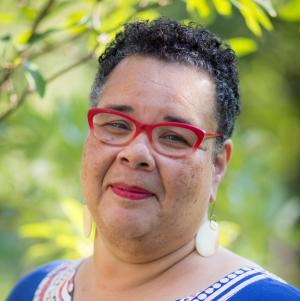
My course began with an iconic book by bell hooks and ended, after several other readings, with a beloved text by Parker Palmer. On the last day of class, a white woman student came up to me to tell me how much she enjoyed the course (she had earned an A in the course), and to give me feedback, saying, “Next time, start with the white guy and not bell hooks; it will be easier for us white people to stay in the conversation.” So much teaching is complicit with dominant race ideologies and patriarchy, yet we yearn for different ways to teach. White normative approaches to disciplinary-subject matter, reading lists which strain to add even one non-white author, grading standards which insist upon majority culture assessment categories are only a few of the ways that the ideals which normalize whiteness permeate our daily living and teaching. Disrupting these patterns of evil and shifting these detrimental values takes mixing things up, muddling stuff, creating newness and difference. Increasing our knowledge of new resources and redefining our criteria of what might constitute acceptable academic resource for our classrooms, might be a way forward. Look for narratives which resist and repudiate the story of whiteness. Stories that champion and reinforce whiteness and patriarchy, stories that allow for a token few minoritized people to triumph, but refuse to portray a change in the oppression for all or stories which never question the absence of powerless people in significant roles permeate our airwaves and imaginations. We are persons immersed in the narrative which supports and promotes white supremacy, white nationalism, and patriarchy. We have to find ways to resist. A critical challenge for all teachers who want to teach as a disruption to whiteness and patriarchy is that, regardless of personal social location, each of us must expand our knowledge of freedom narratives. We, all of us, given the ethos of the United States in the 21st century, must with great intent, seek out and immerse ourselves in the counter-narratives to the lie of whiteness. We must internalize a narrative of freedom, love, creativity, and forgiveness. We must believe in the sacredness and worth of all human beings and teach this story in unflinching and believable ways. As a spiritual discipline, take time to fill your consciousness and imagination with freedom narratives as a way to fortify yourself for teaching against the status quo. We must re-teach ourselves in order to teach toward freedom. Read stories that depict and portray people of color as intelligent, generative, and caring human beings – as normal. This is why the movie Black Panther was so popular and so refreshing. It did not start and end with chattel slavery. It made use of fresh portrayals of people of the African diaspora which told a story of community, kinship and the complexity of freedom. Avoid the motifs of the individual superhero like the ways Martin Luther King’s or Harriet Tubman’s legacies have been distorted. Look past the stories of inferiority and degradation often told in the daily news cycle. Find stories where the women are not one-dimensional wooden beings and the people of color are not gratuitously violent, oversexualized, or stupid. Teach yourself to identify the narratives of freedom and bring them into your classroom. In immersing yourself in freedom narratives, look for a multiplicity of mediums: film clips, music, screenplays, artwork, photography (all means of storytelling), and then consider making use of the best ones in your classes. Narratives that are sophisticated about race/gender politics are seeping into the U.S. culture. Look for new stories like “Dear White People” on Netflix. Binge watching both seasons of “Dear White People” took focus and stamina. I managed to do it in 48 hours – taking occasional breaks to walk my dog, get a snack and sleep. The well-written Netflix series is based upon an acclaimed film of the same name. The plot is set in a 21st-century fictitious college called Winchester University. The story depicts the lives of African American college students at this Ivy League, predominantly white university. The Black students are bright, articulate, culturally and politically conscious, and conscientious. In other words, the black folks are woke. The title “Dear White People” is a clue that the white folks of the community are not woke. The lead character and protagonist has a campus radio show. She often, to inform white peers, professors, and university administrators formats her radio soliloquies in the form of a letter which begins, “Dear White People.” Then in great poetic rant, she informs and reprimands the offending, or simply ignorant, white people about their white supremacy, privilege, and the ways their behaviors and the racist, sexist systems which privilege them, to which they seem to be oblivious, continually affect her and her friends. The poignant stories disclose and interrogate cultural bias, social injustice, misguided activism, and the zeal that comes with college-aged persons. The stories are also about the relationships of young people and the ways they struggle to negotiate their social, cultural, and intellectual growth. Creator and executive producer Justin Simien is a storyteller who understands the ever-present irony, bitter humor and too often anger for persons attempting to live life while being a target of white supremacy and patriarchy. “Dear White People” is an expanding of freedom narratives. This is the kind of material you want to explore for possible classroom use. Material which unapologetically tells the story from the perspective of the oppressed and the ways we navigate the dehumanizing terrain. Consider radical ideas as you find new resources. What if you taught your introductory course with no white or male authors? Develop a course which is soundly disciplinary, but has no majority culture readings. This might mean using all articles and no textbooks, per se, but why not? Teaching to transform might not mean including a few voices of the marginalized --- it might mean excluding the voices of the oppressor so we can learn the perspectives, voices, and stories of the oppressed. And/or consider introducing each text to be read by providing, or having your students research, the social locations of each author. If an author is white and male, identify the person in this way. Resist only identifying the gender and race of authors who are female and people of color because it signals they are “exceptions” to the routinely read normal readings authored by white men. Creating educational spaces for which the voices of the oppressed and marginalized is taken seriously, respected, even prioritized is a paradigm-shifting act – an act of freedom in which you can participate by the stories you bring into your classroom.
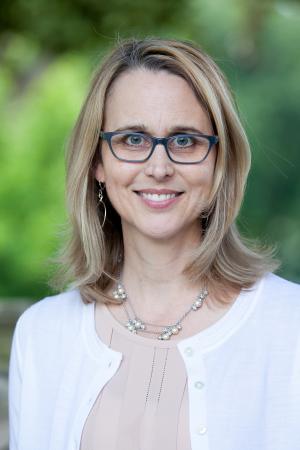
I imagine that once upon a time, a child joyfully ran along the beach in this sandal - picking up shells, building sculptures in the sand, playing in the waves. But, after a season at sea, this sandal would be difficult to walk in – it’s nearly broken in half, now the home of sea life, and no longer part of a pair. Plus, the child who wore it last summer has likely outgrown it. A new season calls for new equipment. Deans are called to help theological institutions, and the people within them, realize these same sorts of things. The shoes we’ve been wearing (perhaps our curricula, organizational structures, recruiting processes, systems of student support, and faculty cultures) don’t always serve us well in a new season. Moving beyond unneeded parts of the past – first naming and then letting go of old ways and sacred cows – can be difficult, however, and so deans also need to care well for faculty, staff, students, and ourselves amid times of significant change. It’s OK to swap out equipment, and sometimes it’s the best option. We still need shoes to get us where we are going, shoes that will provide cushion and support and protection and make the journey easier, but it’s likely time for a new pair of sandals. New equipment may take time to break in, but we can trust that it will serve us well in this new season and allow us to explore and build and play in response to the divine invitation to equip God’s people to serve as they have been called

The ocean – dynamic, powerful and vast – the dean must be willing to be there; walking with and leading others into the movements of change. The dunes - stable, protective and slow – the dean must be a stable and sustaining presence, standing strong with others in the midst of storms. Or perhaps the dean must be the bridge, creating the pathway between energies of stability and change; walking purposefully back and forth between the two and inviting others to walk along.
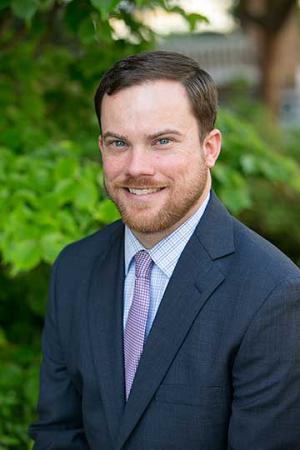
The image of the beach environment displays its givens: sand, sea, sky, dunes, plants, even the unseen particles in the air. The image of the boardwalk and “private property” sign shows a (passable) boundary onto which one can walk to the beach. It provides narrow, bounded access to a more open, free beach space. In times of change, the academic dean must understand the givens and the boundaries of theological education. Givens are the physical (temporal) and ontological realities that give boundary (like the narrow boardwalk) and freedom (like the open beach) to the work of the dean. As deans of theological schools, theological givens ought to be primary. As the beach becomes something else without sand, sea, and sky, the theological school becomes something else without a certain set of theological givens, and their relationship to other realities. Theological convictions and commitments rooted in texts and traditions, and how they cohere, serve as the sand, sea, and sky of the theological school environment. Other givens––cultural, social, institutional, etc.––will inform each dean’s context. The theological givens, I think, order and prioritize the other givens. The dean must know and value the givens in order to understand and carry out her role as an academic leader. Boundaries show the dean the context and scope of her work. They also indicate lines that either ought not or should be crossed. At times, the dean must help faculty, staff, and students flourish within a certain boundary, whether institutional, cultural, social or others. Other times, the dean must help faculty, staff, and students break through boundaries such as an antiquated and disparate curriculum. Curriculum revision offers one example where the academic dean leads the school to define new boundaries. These new academic boundaries will resonate if they reflect the givens of the school, like the boardwalk “fits” the beach environment because of how it helps us access and enjoy the beach. Academic leadership necessitates clear vision and creative discovery of the proper path for the people of the theological school. The givens and the boundaries of the school give the dean a context and lenses for that vision. When changes to theological education come, as they always have, a clear vision enables the dean to see his or her way forward so that the faculty, students, staff, and other constituents of the school may confidently follow, even if the future is unclear.
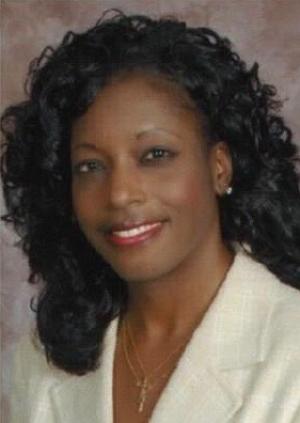
Teaching and learning in academic settings can sometimes appear contrived or artificial in relation to the “real” world or professional contexts for which students prepare. However, this does not always have to be the case. One of the things that has surprised me about teaching in theological education is the spontaneous emergence of holy moments or sacramental spaces in the classroom. These serendipitous occurrences have transpired despite carefully constructed lesson, lecture, and discussion plans. The intrusion of grace-filled moments in the midst of linear, rationally focused pedagogical agendas remind me of the synergistic power of the Divine that never leaves us alone, even in our best efforts and intentions. Addressing trauma through pedagogy as a form of educational and professional development can be an integral part of the teaching and learning experience. Pain is a part of life. In fact, pain is a constant, albeit varied, component of what it means to be human. There is great value in developing ways to gradually face pain directly, as opposed to shrinking or retreating from its reality. Part of a quality classroom education is helping students negotiate methods of confronting pain. Knowledge-based and contextually-driven learning enables students to acquire applicable models for dealing with pain and trauma in other settings. One way of thinking about teaching and traumatic events in the classroom is to envision instructional and experiential sacramental spaces. Sacraments are outward, visible signs and symbols of invisible, interior spiritual graces. They are gifts of the Divine. Although primarily viewed as specifically dogmatic and rites-based, sacraments can also be understood in terms of the varied means by which God manifests transcendental grace. Opening pathways for the intrusion of the holy, through multiple iterations, into learning spaces mirrors the healing process and thus becomes a viable way in addressing trauma. Historically, Roman soldiers took an oath of allegiance, or sacramentum, declaring a vow of obedience to their militaristic superiors. Similarly, adherents of ancient religious cults ritualistically declared service to the gods or mottos heralded by those societies. By pledging devotion and loyalty, participants bonded to the values and beliefs exemplified by the institution. Christians adopted this system in response not only to the allegiance believers swore to the Divinity of Christ, but also in recognition of the gift of Christ’s own suffering. The solidarity of God with humanity in pain formed the nucleus of a movement. Swearing the sacrament of faith to God was indeed, as in the other systems, a rite of membership. But it was also a means of acknowledging the work that God had done and was doing on their behalf. This deeply reflective theological method is relatable to teaching trauma in the classroom. Teachers and learners bring their best efforts in terms of preparation, study, and participation. That is, they do the work. Yet, they also make room for the work of God. Teachers can allow for this to happen through the cultivation of listening moments in the classroom. For example, the traditionally contemplative method of lectio divina is organized by study, prayer, reflection, and meditation. These steps allow for holy listening to the Spirit in the midst of the rational, exegetical process of biblical learning. Balancing the logical processes involved in classroom learning with short breaks of reflection, problem-solving, and simple quiet nurtures a sacramental atmosphere. In so doing, awareness is distilled that God embraces our best efforts with the unmerited grace that transforms.

It sighed again the shark. Spitting out yet more fun gleeful humans thrilled at its unreal teeth.
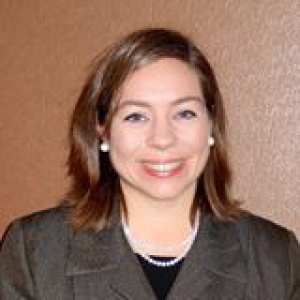
More than once, a student has reported on a trauma unfolding in real time in the middle of class. Students with laptops open, or phones nearby, have shared breaking news of university lockdowns or school shootings. Just this semester, in the hours surrounding classes, we’ve seen gun violence and middle school walkouts, women’s rights and sexualized violence, police brutality and other forms of racist misuse of power, DACA and the risk and vulnerability of undocumented students, and more. As a teacher, how does one prepare for what to do next? Part of responding to trauma is preparing to be present in unpredictable moments. Where in the curriculum do students learn whether to interrupt teaching and learning, to rewrite budgets, sermons, pastoral prayers, to scrap programming or lecture content in favor of addressing a trauma at hand? This year I’ve experimented more regularly with a strategy I’ve used occasionally to structure time and space into my courses for the unpredictable. When trauma interrupts class, I often feel compelled to address it. However, I don’t always know which issues will trigger which students. Disclosing personal histories of trauma is not something I require nor think should be required. Histories of trauma exist, at all times, in visible and invisible ways. Some new trauma will interrupt, a decision is made about whether or not to address it, and unintended consequences may follow. A “one-layer removed” pedagogical strategy helps me hold space to respond to trauma that interrupts courses while also protecting students from having to disclose their personal histories or being triggered directly. The strategy structures a simulated conversation about having a conversation about the presenting traumatic event. It’s not the conversation per se, but a directed conversation about the possibility of a more direct conversation at another time and place. Thus, the pedagogical exercise is by design one-layer removed from a trauma that interrupts. How does it work? The one-layer removed practice requires at least 15 minutes of class time on a regular basis throughout the semester. I divide the class into groups of three with a seeker, a consultant, and an observer (a classic role play design). In larger groups, seekers can tag team or consultants can work together, or observers can share unique observations in turn. The seekers are the students themselves in their actual or imagined future vocational setting. The seeker contacts the consultant(s) about how to address a particular trauma in their ministry setting, practicing collegial consultation with a prompt: Seeker: Given the topic of class today and the reading we’ve been doing, I want to respond to (fill in the trauma that has interrupted the class in real time or in the local or global community). Can you help me imagine how to do so? The consultant and seeker discuss possible conversations they imagine having or not having in their ministry, vocational, or other context at another time and space. After 5 minutes, the observer(s) reports about connections they see to the course themes, readings, contextual factors, trigger warnings or concerns, and more. Then, to debrief, the group can join with another group or the whole class can have a brief or longer conversation. This “one-layer removed” practice highlights three learning goals I have for students in several of my classes: (1) practicing and preparing to remain present when unpredictable care concerns and moral dilemmas arise (2) demonstrating and committing to ongoing courageous self-awareness and leading courageous communal awareness[1] (3) building on this awareness, cultivating a living referral network through practices of relationship-building, consultation, and networking. When trauma infuses public discourse during a semester or even during a class session, a one-layer removed practice helps the class work on all three of these goals. Here’s an example. This past fall, the #metoo movement arose with renewed energy[2] in which people, particularly women, disclosed experiences of abuse through social media and public protests. It was hard not to notice. In October 2017, I was teaching examples of trinitarian pastoral theology that took seriously intersectional concerns of gender, class, race, and a history of surviving abuse. There were lots of connections between course requirements and collective trauma being disclosed through the #metoo public discourse. In a class session, I used previously set aside one-layer removed practice class time: Seeker: Given the topic of class this week and the reading we’ve been doing on taking women’s experiences seriously in our theologies of pastoral care and given the eruption of the #metoo movement this week, I am thinking about quoting this prayer[3] in my faith community’s service this week. Do you think that’s wise and how could I frame it? In the brief but important conversations that emerged, students practiced putting words to something that was painfully very familiar to some and not at all to others. Students considered how various folks with various experiences might receive either these words, other words, or lack of words about #metoo. Students brainstormed the kind of referrals they would need in their pocket that week in their various ministry and nonprofit contexts, no matter what was said or unsaid, about local resources they might print on a service bulletin. We discussed self-care, courageous communal care, and, yes, we incorporated assigned readings on implications for trinitarian pastoral theology and why that mattered. A one-layer removed pedagogical strategy helps students in my practical and pastoral theology and ethics classes prepare for moments when trauma or other dire care needs interrupt their work as a student, minister, nonprofit leader, or even dinner conversations with family and friends. Increasingly in the last year, as a pastoral theologian, I’ve been called by friends and strangers both near and far to support communities regarding various traumas. For example, I’m on a non-profit board whose carefully constructed budget had to be completely rethought when violence erupted in our service population. Suddenly we needed to fund emergency counseling and care across multiple countries and communities. Here is just one example where my own lived experiences and the learning outcomes I have for my students aligned: the need to create a referral network before you need it. Trauma will impinge on previously scheduled plans and folks will ask religious and spiritual leaders for advice, expect to hear a word or prayer, and hope to find some assistance in what to do next. I teach graduate students in theological education at the Masters and Doctoral levels and often remind my students that whether or not they see themselves as religious or spiritual leaders, folks who know they are educated in graduate theological education will expect them to be present in significant life and death moments. Where can students practice this in the curriculum? I’ve found that a pedagogical practice of one-layer removed can offer crucial time and space to practice. [1] This awareness is important for helping students know which issues are too close to their own experience for them to be a care-provider and therefore need to establish referrals for help with these issues before they are needed. [2] Tanara Burke, longtime supporter of social justice for women and girls of color and founder of the nonprofit organization “JustBeInc,” created the “me too” movement to support survivors of sexualized violence a decade before the social media #metoo campaign of 2017 (see for example, https://www.nytimes.com/2017/10/20/us/me-too-movement-tarana-burke.html. See also http://justbeinc.wixsite.com/justbeinc/board ). [3] I provided each group with copies of a blog that had been published that week from Rev. Sarah Griffith Lund at https://sarahgriffithlund.com/2017/10/18/god-were-you-there-when-metoo/

In a society wrought with busyness, contemplation is often deemed a foolish waste of time. Yet, for those of us who want to be reflective practitioners of teaching, contemplation is essential. In considering the needs of students who are navigating our frenetic society, perhaps they, too, need to learn to be more contemplative. Suppose the lessons we teach about social change, eradication of patriarchy and white supremacy, and the need to support the poor into economic stability, cannot be grasped or attained without contemplation? Teaching against the societal values of individualism, violence, greed, and competition needs deep reflection. Raising awareness of the oppressive economic systems, unnecessary suffering, and environmental devastation might mean learning the practices of contemplation if we are to survive. Recognizing the inhumanity of oppressive structures, and summoning the creativity to reimagine a society that is more communal, more humane, more equitable, takes long periods of thoughtful concentration. Clarity and wisdom can be beckoned through the work of contemplation. In considering the role of contemplation in teaching and learning, I asked myself if there have been moments in my life where I have had the experience of contemplation from which I might draw to better teach my students. If I am to incorporate contemplation for my own learning, what do I know about contemplation and how have I come to know it? When have I experienced contemplation that was useful? This was the helpful recollection: My dad had a certain kind of know-how. Among other things, Dad knew the right days to fly kites. This, I have come to understand, is a kind of wisdom. Kite day was not a set date on the calendar. Kite day was the day that Dad knew the wind was just right. How he knew – I still do not know. On the appointed day, usually a spring Saturday, Dad would announce to me and my brother Brent that it was Kite Day. The announcement meant we, in great excitement, would gather the needed elements to build kites. Brent and I would grab previously read newspapers, the stakes used for tomato plants, assorted kinds of string and old undershirts. We spread the supplies out on the dining room table and my father went to work. With the precision of an origami artist, Dad carefully folded the newspaper, attached the stakes into the folds, then, using ripped up tee-shirts, fashioned and knotted a tail for each kite. The last step was to apply the string and check the makeshift reeling. Once the kites were assembled, we processed, kites in-hand, careful not to drag the tails, to the baseball field across the street from our row house in North Philly. Dad would choose the spot for the kite flying by pausing to feel for the wind. Then, I thought he was just being dramatic. Now, I know feeling for the wind is a necessary aspect of successful kite flying. After quiet moments of wind-testing, we were ready. With great care each kite was placed on the grass and its tail was carefully laid out. My brother and I wanted to run with our kites - demanding them into the sky, but no kite ever obeyed. My father said, “No kite flies from running it into the sky – you must wait for the wind.” Waiting for the wind was not easy because it meant just that - waiting. What I learned is that once the flurry of assembling the kite is over – kite flying becomes a contemplative sport. Waiting for the wind required patience, stillness, and focus. These moments of waiting were full moments of silence, light conversation, or just observing the surroundings. With no notice, sometimes gusts would come and abruptly snatch the kite up into the air then just as abruptly slam it down to the ground. If kites became bruised or even destroyed, Dad would fix it or fashion a new one on site. Sometimes, if my brother or I had been lulled into inattention, a gust would take our kite up and the fast-moving string would burn our tender hands. We learned about friction and how to put Band-Aids on fingers. As we became more attuned, Brent and I learned to hold the kite back from flight when the wind was too strong. We learned to judge the right wind and see our kites into lift-off. The moments of lift-off were exciting. Feeling the wind take hold of the kite in a gentle way was the anticipated moment realized. Once lift-off was achieved, the job was, as Dad instructed, to “Keep the nose up!” so the kite would gain altitude and so the line could be let out gradually and evenly. When the kite was 10 or 20 feet in the air, the goal was to get the kite to 40 or 50 feet. The best flying was when the line was completely let out, and we had time to quietly sit and gaze while it danced, soared, and pranced across the sky. The sky above our field in North Philly was quite a lovely site on kite flying days. Friends, am I suggesting we all learn to fly kites? Yes! Sometimes the literal is the best. Beyond the literal, I am considering ways of designing learning activities for students, as well as developing practices for teachers, which require time to tarry, linger, be still and quiet. This elegant practice might spawn our best teaching, ever. It might be as simple as breathing and pausing before answering questions in classroom discussion or instructing students to think silently for a few extended moments before asking questions. Slowing the tempo of Q&A might led to deeper, more insightful inquiry. Beyond that, crafting exercises which make use of meditation, silence, and stillness to consider complex or emotionally charged concepts could be a refreshing change to the typical patterns of classroom interaction. And of course, for teacher preparation, time spent in silence, in mindfulness practice, and in stillness for re-centering and preparation will likely make us calmer, more present as we teach. The greater change in our classrooms might be developing the sensitivity and patience to wait on the winds of our students, i.e. their curiosity, their questions, and concerns, to shape the course and discussions. A contemplative classroom could be a more attuned, a more relevant learning experience. Let us all find beneficial ways to wait for the wind.

Over the past few years, I’ve come to cherish the opportunity to observe others teach. Teaching my own courses, I don’t get the chance to do this as much as I would like, but it’s one of my favorite parts of the profession. I love a good lesson plan. I appreciate the confidence carried by teachers who know where they want to take a class. A detailed outline plotting the way one intends to lead students impresses me. I am that guy . . . the one that will start the slow-clap after witnessing an instructor’s smooth execution. Although these are the moments that make the highlight reel of best pedagogical practices, my sense is that effective teaching is truly on display when the plan falls short. It’s when the setting—whether a classroom, conference, presentation, or one-on-one discussion—presents detractions and the teacher must deal with them on the fly. When a traumatic event factors into the syllabus, we should take extra care to distinguish between distractions and detractions. Trauma can leave students raw, and we would be callous to begrudge the wandering or even hardening of the mind. Distraction can be a way of dealing with the circumstances. To me, detraction is a different story. It involves the active placement of obstacles to impede the learning agenda. This is when someone comes to loggerheads with the teacher and the lesson being taught. Detractions have to be dealt with or the class, and those on board with it, will flounder. Detractions also differ from disagreement. The contextual experience of trauma makes consensus near impossible. Although life would be easier were we all to agree, consensus is a bonus, not a condition. The problems that disagreements bring pale in the face of those caused by detractors who use disagreement to threaten the educational agency of those in the room. The HigherEd journalism beat and the academic blogosphere have chronicled the reasons why faculty might steer clear of engaging traumatic events in the classroom. There’s no reason to rehash those here. Nor will I repeat the ways this isn’t a choice in the same way for all people. But as the semester wraps up, and teachers get reflective (after recovering, of course), I thought I might share a few of the more subtle ways I’ve seen teachers deal with detraction on the fly. The moves were improvised, but my sense is that the tactics can be practiced. Put Out the Fire If you teach long enough, you are bound to get someone intent on harming the people interested engaging your lesson. This sort of detractor is a flamethrower, using every chance to burn your lesson plan into cinders. Some do this for sport. Others have a bone to pick. You’ll never really know in the moment. Nor will they. Some teachers shut this down with decisive quickness, but if this isn’t a play available to you, then you need to keep in mind the physics of the situation. As much as we’re supposed to “reach one, each one,” the job is to teach those in the room. Obstacles to that teaching must be navigated, even when that obstacle is a student’s behavior. Left to their own devices, flamethrowers will combust, so how might you starve the fire? Don’t give the flamethrower the air of your attention. Choose to engage other people in the class by inviting only those who have not spoken with a chance to share. Or find one neutral-to-productive element in the flamethrower’s statement, interrupt with a restatement of the point, and redirect toward someone else. Ultimately your job is to win the room, not to throw flames with the heckler. If you get them on your side, you’ll have contained the flamethrower until it burns out. Disrupt the Momentum Detractors remind us just how much teaching relies on momentum. When everyone is agreeable and goes with the flow, teaching feels easy, or at least easier. At the same time though, we know that learning involves stress, pressure, and tension at the intersection of preconceived notions and the challenge of new information. Detractors keep us honest about this process, even though they’re not helping us bring the class to the desired educational destination. We can repurpose disruption, the detractor’s favorite tool, for the purpose of teaching. If you can tell that something has happened to stoke the detractor’s fire, call a class time out. You can hold a few moments of silence from the front of the room until you’re ready for class to resume. You can take a five-minute break, let people stretch, use the restroom, and leave the class for a moment. Some have implemented the latter to great avail. Putting the brakes on a class is a good way to marshal the favor of the group and disrupt the detractor’s plan. Take Notes I began this post professing my love of the lesson plan. My affection has many facets. The written lesson plan gives the teacher a tangible record of intention. It is proof of what you wanted to happen and an explanation of what you were willing to do to manifest that wish. In these times a paper trail is never a bad idea. Lesson plans are living documents. Some people like to take notes on them after a class (and even during if they’re feeling dexterous) to note the changes as they come. I like having a record from which I can make sense of what occurred. It can help the next time one runs in a detractor. And in case the situation doesn’t go away, you have documentation to show how invested you were in making the class work. Detractors rarely can do the same. “Know when to Hold ‘em…Know when to fold ‘em.” Finally, and this cannot be stressed enough, you might need to call it a day. Excellent teaching doesn’t have a time quota. One certainly should not exceed an agreed upon time, but we so easily forget that there may be a virtue to ending a class early. Some teachers can gracefully introduce a prompt that class time is better spent leaving students to reflect on their own. When detractors are involved, participant energy can be depleted in an unusual manner. If there’s no more good to come from being together, then don’t stay together. Bring the class to a coda and resume at another time. These are just a few tactics worth keeping in your back pocket for the next time you encounter a detractor. If you have some to share, please do so in the comments section or on social media. The more, the merrier.

The cactus can be a metaphor for our institutions; institutions whose pasts may seem dead, yet there may still be new growth emerging. The cactus grows around its historical center. The flowers are new life, distinct from and arising out of the present – in all its steadfastness, stability, and prickliness. The dean is to be the light of perspective whose shadow highlights the institution’s place in time.
Categories
Write for us
We invite friends and colleagues of the Wabash Center from across North America to contribute periodic blog posts for one of our several blog series.
Contact:
Donald Quist
quistd@wabash.edu
Educational Design Manager, Wabash Center
Most Popular

Are You Okay?
Posted by Nancy Lynne Westfield, Ph.D. on October 1, 2025

On Plagiarism and Feeling Betrayed
Posted by Katherine Turpin on October 27, 2025

Embracing the Imposter Within
Posted by Fred Glennon on September 15, 2025

A Teachable Moment Missed?
Posted by Fred Glennon on October 20, 2025

Analog Versions of Digital Classrooms
Posted by Samantha Miller on October 8, 2025